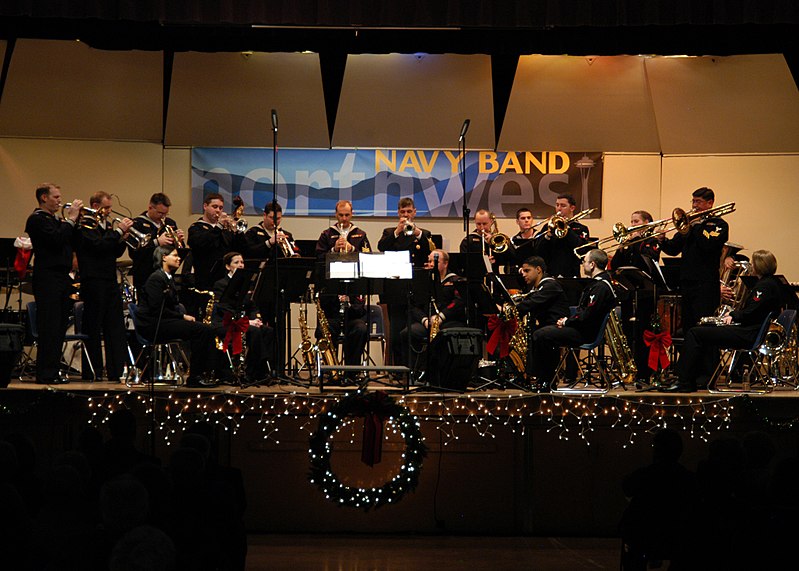A Big Band is a kind of musical ensemble of jazz music. They usually have ten or more musicians, and it is divided into four sections, namely the trombones, saxophones, trumpets, and the rhythm section. Big bands started to emerge in early 1090, and it began dominating the jazz scene in the early 1940s, where swing was one of the most popular music genres in the world. The name Big Band is also used to describe the type of music even if it is not the only style of music that was frequently performed by big bands.
History
Before 1910, social dance in America was dominated by dance styles such as polka and the waltz. When jazz music began to migrate from New Orleans to Chicago and New York City, it bought suggestive and energetic dances along with it. As time passed by, ballrooms were filled with people who were doing the Lindy Hop and the jitterbug.
By the 1920s, Big bands slowly emerged at the music scene. They typically included at least ten musicians, and they played written arrangements that have consistent melodies along with improvisation and spontaneous soloing. One of the most famous artists in the big band scene was Duke Ellington, who was considered to be the most innovative composer and arranger during that time. He often composed music around the strengths of the soloist in the big band. When the stock market crashed in 1929, it caused a drastic decrease in record sales along with an increase in the unemployment rate among musicians. However, the Depression proved to be a catalyst for big band music because of the excess of musicians who were looking for work brought down wages, and it made it easier for leaders to hire bands with big numbers. The increasing radio accessibility also helped broadcast the big bang music from different venues, which helped popularize the big band sound and create iconic musicians such as Louis Armstrong, Duke Ellington, and Cab Calloway. After that, thousands of musicians followed through their success, and they spent the decade traveling to clubs and dance halls in almost every city and town in the United States.
The significant band phenomena continued on, and it took jazz to new venues like the Carnegie Hall, which has been a preserved place for classical music. During that time, swing bands became a big business because if you create the right song, you can expect that you will have a million-seller on your hands. However, aside from being a test of musical prowess, running a big band during that time was a bit tricky, especially when it comes to the financial astuteness and the management of the band’s members. Back then, the bandleader would have to pay for the band’s uniforms, bus, publicity costs, and even agency fees. Big band music continued to dominate the music scene even during the Second World War. By the end of the war, Big band music along with jazz music started to move on into new experimental ways
Most Notable Big Band Artist
- Count Basie – Count Basie was a pianist that started to gain popularity in Kansas City as a member of Bennie Moten’s big band in 1929. After a few years, Basie decided to form his own big group, which became one of the most famous artists in the country. Count Basie is known for his precise and sparse piano playing style, along with his rousing and bluesy compositions.
- Coleman Hawkins – Coleman Hawkins is known for his raspy and unique tone, which is combined with his beautifully detailed improvisation. He was able to become one of the preeminent tenor saxophonists during the swing era.
- Fletcher Henderson – This man had an essential role in opening up new and creative possibilities in jazz music. Fletcher Henderson is known to be a skilled arranger, pianist, and composer during the significant band era. He was also the man who was responsible for the formation of Louis Armstrong’s career.
- Duke Ellington – Duke Ellington is considered to be one of the most famous composers in American music history. He managed to lead his band for almost a decade of performing, recording, and as well as composing and arranging their songs. Several songs that were done by Duke Ellington are now considered jazz standards.
- Ben Webster – Webster was one of the three titans of the tenor saxophone during the swing era. He is known for his rough up-tempo tunes and graceful ballads. He rose to popularity while being a member of Duke Ellington’s band, wherein he was the leading tenor soloist.
